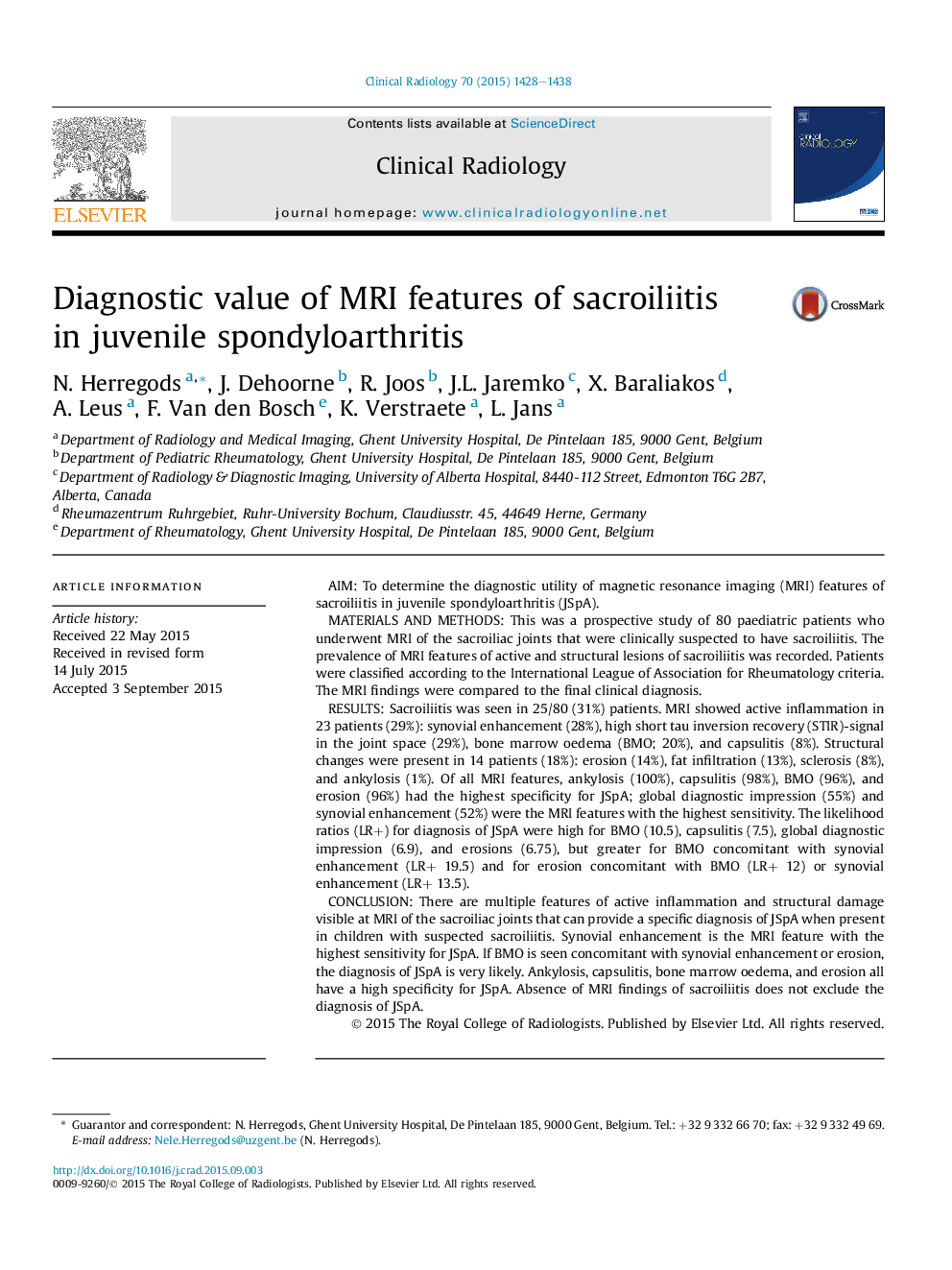| کد مقاله | کد نشریه | سال انتشار | مقاله انگلیسی | نسخه تمام متن |
|---|---|---|---|---|
| 3981363 | 1601151 | 2015 | 11 صفحه PDF | دانلود رایگان |

• Features of active inflammation and structural damage visible on MRI of the SI joints can help diagnosing JSpA.
• Synovial enhancement is the MRI feature with the highest sensitivity for JSpA.
• If bone marrow oedema is seen concomitant with synovial enhancement or erosion the diagnosis of JSpA is very likely.
• Ankylosis, capsulitis, bone marrow oedema and erosion all have a high specificity for JSpA.
• Absence of MRI findings of sacroiliitis does not exclude the diagnosis of JSpA.
AimTo determine the diagnostic utility of magnetic resonance imaging (MRI) features of sacroiliitis in juvenile spondyloarthritis (JSpA).Materials and methodsThis was a prospective study of 80 paediatric patients who underwent MRI of the sacroiliac joints that were clinically suspected to have sacroiliitis. The prevalence of MRI features of active and structural lesions of sacroiliitis was recorded. Patients were classified according to the International League of Association for Rheumatology criteria. The MRI findings were compared to the final clinical diagnosis.ResultsSacroiliitis was seen in 25/80 (31%) patients. MRI showed active inflammation in 23 patients (29%): synovial enhancement (28%), high short tau inversion recovery (STIR)-signal in the joint space (29%), bone marrow oedema (BMO; 20%), and capsulitis (8%). Structural changes were present in 14 patients (18%): erosion (14%), fat infiltration (13%), sclerosis (8%), and ankylosis (1%). Of all MRI features, ankylosis (100%), capsulitis (98%), BMO (96%), and erosion (96%) had the highest specificity for JSpA; global diagnostic impression (55%) and synovial enhancement (52%) were the MRI features with the highest sensitivity. The likelihood ratios (LR+) for diagnosis of JSpA were high for BMO (10.5), capsulitis (7.5), global diagnostic impression (6.9), and erosions (6.75), but greater for BMO concomitant with synovial enhancement (LR+ 19.5) and for erosion concomitant with BMO (LR+ 12) or synovial enhancement (LR+ 13.5).ConclusionThere are multiple features of active inflammation and structural damage visible at MRI of the sacroiliac joints that can provide a specific diagnosis of JSpA when present in children with suspected sacroiliitis. Synovial enhancement is the MRI feature with the highest sensitivity for JSpA. If BMO is seen concomitant with synovial enhancement or erosion, the diagnosis of JSpA is very likely. Ankylosis, capsulitis, bone marrow oedema, and erosion all have a high specificity for JSpA. Absence of MRI findings of sacroiliitis does not exclude the diagnosis of JSpA.
Journal: Clinical Radiology - Volume 70, Issue 12, December 2015, Pages 1428–1438